Beginner 10K Training Plan
- Home
- Running Plans
- 10k Running Plan
- Beginner 10K Training Plan
Beginner 10K Training Plan
“The advice I have for beginners is the same philosophy that I have for runners of all levels of experience and ability – consistency, a sane approach, moderation and making your running an enjoyable, rather than dreaded, part of your life.” – Bill Rodgers
Welcome to the Beginner 10K Training Plan, your gateway to the world of running excellence and the thrill of conquering a 10K race. With an ever-growing number of individuals completing 10K races each year, you’re about to join a vibrant community of runners who have embraced the challenge. Designed specifically for beginners ready to take the leap from shorter distances, this program focuses on building a solid foundation of endurance and confidence. As millions of participants globally cross the 10K finish line annually, this plan provides a structured and attainable approach to help you become one of them. Lace up your running shoes, embrace the excitement, and get ready to embark on a journey that transforms your fitness and connects you with countless others who have found joy and accomplishment in conquering the 10K distance. Your journey to 10K glory starts here – are you ready to make your mark?
Individuals will choose this plan if they have been running regularly 3 to 4 times for at least 40-minutes each time. If you are currently running less, that is okay! You may want to consider starting with the Run-Walk 10K plan or the Beginner 5K plan. Starting with either of these plans will allow you to properly build your fitness up to be able to complete this level of running plan.
10K Beginner Running Plan at a glance:
The beginner 10K running plan follows the following structure and is available for purchase through Coach Andrew Taylor's Final Surge coaching page.
- Length: 10 weeks
- Typical Week: 4 days of running and 1 to 3 days of rest
- Optional Work: Cross-Training and Strength Work
- Longest Workout: 6 Miles
- PDF: Easily download your running plan as a PDF
- Supplemental Training Materials: Activation Warmup Routine, Dynamic Technique Drills & Flexibility Exercises, Core Strength Routine, and Strength Training for Runners.
- Final Surge: Track your progress using your device, receive daily workout notifications, a drag-and-drop calendar for easy modifications, lifetime access to the plan, and more!
- Cost: $19.99 (purchase here)
What to Expect:
The Beginner 10K training plan is designed for new runners who want to successfully run a 10K race. The focus of this plan is on a combination of easy runs, long-distance runs, rest days, and optional cross-training.
This plan is 10-weeks in length and features four days per week of running. Each running session is based on time instead of distance, leading to a reduced risk of injury and a more enjoyable experience. As the plan progresses, the total running time of each session will increase.
The Beginner 10K training plan includes two optional cross-training workouts per week. These cross-training sessions allow you to incorporate other activities you enjoy with this training plan. Cross-training activities may include cycling, yoga, elliptical, swimming, or weight-lifting.
How to Get Started?
Purchase this Beginner 10K Running Plan on Final Surge for a one-time fee of $19.99 here. Digitally track your progress from start to finish of the training program.
- Sync workouts across devices.
- Daily reminders of workouts and activities.
- Complete workouts based on pace or heart rate zones.
- Analyze workout and target zone details.
- Compatible with Garmin, Strava, Polar, TrainerRoad, MapMyRun, Wahoo, Stryd, and more.
- Printable PDF version of the training plan.
- Activation Warmup Routine.
- Dynamic Technique Drills & Flexibility Exercises.
- Core Strength Routine and General Strength Training for Runners.
- Running Terminology guide.
Looking for more training guidance?
If you need more personalized motivation or advice, we offer online run coaching.
Take the next step in your running ability! Receive a running plan that adapts with you and get feedback throughout your training from Coach Andrew Taylor.
Beginner 10K Running Plan Preview:
The following is a snapshot of what to expect in your purchased Beginner 10K Training Plan.
| WEEK | DAY 1 | DAY 2 | DAY 3 | DAY 4 | DAY 5 | DAY 6 | DAY 7 |
|---|---|---|---|---|---|---|---|
| 1 | 25 Minute Run | 30-45 Minute Cross-Train | 25 Minute Run | 30-45 Minute Cross-Train | 30 Minute Run | 3 Mile Run | Rest |
| 2 | 25 Minute Run | 30-45 Minute Cross-Train | 25 Minute Run | 30-45 Minute Cross-Train | 30 Minute Run | 3.5 Mile Run | Rest |
| 3 | 30 Minute Run | 30-45 Minute Cross-Train | 30 Minute Run | 30-45 Minute Cross-Train | 30 Minute Run | 4 Mile Run | Rest |
| 4 | 30 Minute Run | 30-45 Minute Cross-Train | 30 Minute Run | 30-45 Minute Cross-Train | Rest | 5K Race | Rest |
| 5 | 35 Minute Run | 30-45 Minute Cross-Train | 35 Minute Run | 30-45 Minute Cross-Train | 30 Minute Run | 4.5 Mile Run | Rest |
| 6 | 35 Minute Run | 30-45 Minute Cross-Train | 35 Minute Run | 30-45 Minute Cross-Train | 30 Minute Run | 5 Mile Run | Rest |
| 7 | 40 Minute Run | 30-45 Minute Cross-Train | 40 Minute Run | 30-45 Minute Cross-Train | 30 Minute Run | 5.5 Mile Run | Rest |
| 8 | 40 Minute Run | 30-45 Minute Cross-Train | 40 Minute Run | 30-45 Minute Cross-Train | 30 Minute Run | 6 Mile Run | Rest |
| 9 | 40 Minute Run | 30-45 Minute Cross-Train | 30 Minute Run | 30-45 Minute Cross-Train | 30 Minute Run | 4 Mile Run | Rest |
| 10 | 30 Minute Run | 30-45 Minute Cross-Train | 30 Minute Run | Rest | Rest | 10K Race | Rest |
The above training plan preview is designed for educational purposes and is not prescribed for any particular individual. The preview presented does not include complete details of what should be done on each training day. Consult your physician or other health care professional before starting this or any other fitness program to determine if it is right for your needs or if there are any individual health concerns to be aware of.
10K Running Plan Terminology:
The Beginner 10K training plan terms are defined inside the purchased plan, but let me explain them for you here as well.
Warm-Up: Run/Walk for 5 to 10 minutes at an easy effort before every workout (run days and cross-training days). A proper warm-up will help to gradually increase heart rate, improve circulation, loosen up muscles, and prepare you for a workout.
Cool-Down: Run/Walk for 5 to 10 minutes at an easy effort after every workout (run days and cross-training days). A proper cool-down will help gradually bring your heart rate and breathing back down to normal levels after the days workout.
Perceived Effort: A way to rate your effort level based on your feelings about the level of intensity on a scale of 1 to 10. A 1 is considered ‘At Rest’ and a 10 is considered “An All Out Effort.” Use this scale in combination with Pace and Heart Rate to stay in the correct intensity level shown in the training schedule for a given day.
Heart Rate: If you have access to a heart rate monitor then use this device to stay in the correct range and intensity level shown in the training schedule for a given day.
Cross-Training: Include activities other than running and walking in your training plan. If you are completely new to exercise, then you may want to wait until weeks 4 or 5 to add in cross-training workouts. If you are already active 3 to 4 days per week, then start the cross-training as scheduled in the plan. Examples of activities for cross-training may include cycling, elliptical, rowing, strength training, swimming, or yoga. Cross-training will help to reduce the impact on your body and reduce the risk of injury from running. Cross-training can also speed up recovery time between running workouts. If you are ever feeling too fatigued or sore from running, then you may want to consider taking an occasional cross-training day as an extra day of rest.
Strength Training: A form of cross-training, strength training can be a great way to increase lean muscle and boost metabolism while at rest. Strength training can be completed using body weight, free weights, resistance bands, weight machines, or classes such as Pilates, Yoga, or CrossFit. Include exercises for the upper body, core, back, and lower body. Warm up with a run/walk for 5 to 10 minutes. If you are new to strength training, then start with 1 set of each exercise for 12-15 repetitions. The goal is to work your muscles to fatigue or until you can no longer maintain proper form during the exercise. Continue with 1 set of each exercise for weeks 1 through 3, then progress gradually over a few weeks to 2-4 sets of each exercise for 8-15 repetitions.
Flexibility: Stretch lightly after every warm-up and cool-down period. Stretching will help improve flexibility, increase circulation, speed up recovery, and reduce the risk of injury.
Training Paces: We summarize the common training paces below. However, this article on training paces gives an easy-to-understand overview of all the different training paces that can be added to a runner’s routine to improve speed, endurance, and recovery.
Easy Run: Easy pace/effort is considered at or slightly above what you can maintain a conversation, 65-75% of maximum heart rate, and 6-7 on the Perceived Effort scale.
Long Run Effort: The key to developing endurance is the long run, progressively increasing in distance each weekend. The long run should be done at a pace/effort so that you can easily maintain a conversation throughout the run. Work on running with an even pace/effort from start to finish of the long run. Be sure to recover properly after a long run as well so that you can get right back to training in the next day or week.
Racing: Consider adding test races throughout your training plan, especially if your goals are time-oriented. This race will allow you to familiarize yourself more with running in a structured event. If you can’t find a race during this week, feel free to modify the schedule around what races are available.
Adaptability: Don’t be afraid to move the workouts from day to day and week to week. This training plan is merely a guide to help you complete your desired race distance. Be consistent with your training, and the overall details won’t matter. Listen to your body and progress as your fitness allows you to progress.







